In the previous article, it was possible to show that entering the atmosphere with lift allows you to reduce overloads and thermal effects when braking in the atmosphere. But what other advantages does the aerodynamic performance of a spacecraft provide? And how can the aerodynamic perfection of the ship be increased?
The appearance of a ship with a load-bearing hull
The simplest version of a ship with a load-bearing hull is a cone with a blunt toe. The nasal bluntness creates a detached shock at a safe (for thermal protection of the body) distance, and the excess pressure from the air braking generates lift on the body. To calculate such a layout, there are fairly simple analytical dependencies that allow, with the help of patience and any available calculation tool, to obtain a set of aerodynamic characteristics (N.S. Arzhanikov, G.S. Sadekova, "Aerodynamics of aircraft", Chapter 11)
The main limitation on the appearance of our reentry spacecraft will be the usable volume (which must be no worse than 10.4 m 3 of the Apollo cabin).
Length, m |
9.6 |
Weight, kg |
5460 |
Amidships area, m 2 |
7,065 * |
Maximum quality, - |
1,3 |
* with a midship diameter of 3 meters, such a ship can be accommodated on the Falcon-9 (midship diameter - 3.7 m) |
|
Appearance of the descent vehicle
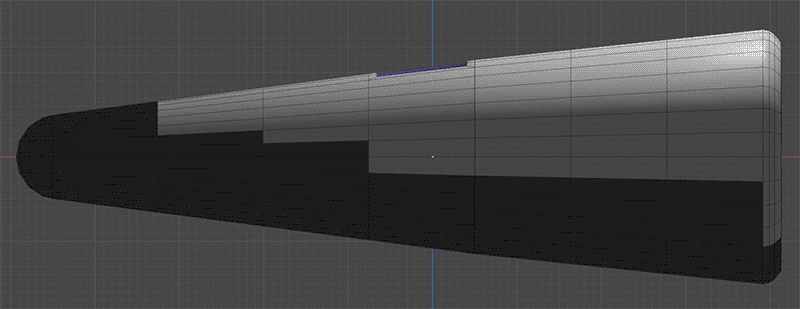
Aerodynamic performance
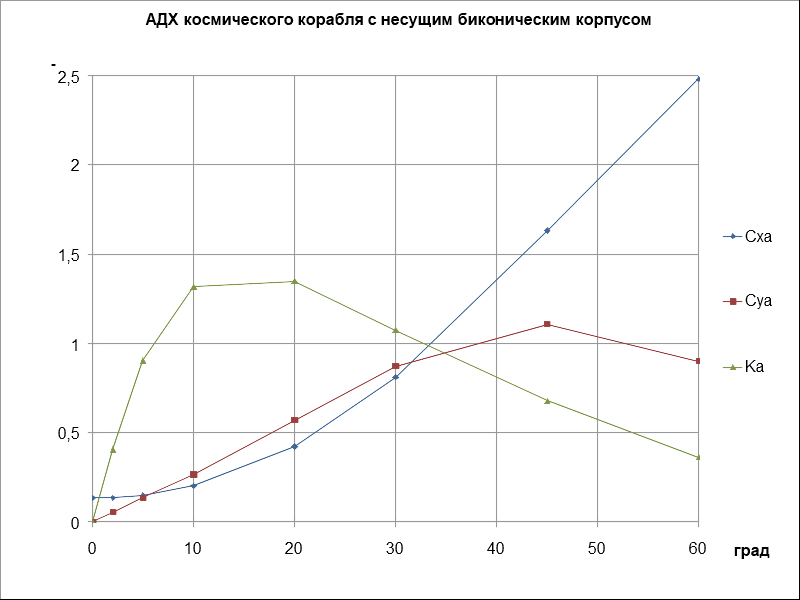
The closest analogue is the cargo module of the "Constellation" program
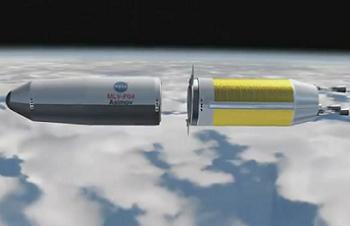
In such modules, it was supposed to deliver components of a manned expedition to Mars. Expected aerodynamic quality ~ 0.5
Scenario-1. Simple descent from orbit
In the previous article, we considered deceleration in the atmosphere after returning from the Moon at a speed close to the 2nd cosmic one. Let us consider a more urgent task - the return of a spacecraft from a low near-earth orbit at a speed slightly less than the 1st space speed. Parameters of entry into the atmosphere V = 7650 m / s, H = 120 km, Th = -1.5 deg.
Descent trajectory without lateral maneuver

- ( 1g) 206 69,5 . 225 (~0,17-0,18), 654 , 2560 .
, ~ 0,5g. 271 , , 57,5 72,8 ( Silbervogel . ). 759 (~ 61,7 ), 2150 21,6 (310 /).
, (~ 65 ). 2342 , 11400 . 1,37g, - 0,94g.
-2.
. 250 350 60 , .
Apollo 0,23 - 25,6 . , , - 2340 .
"-"
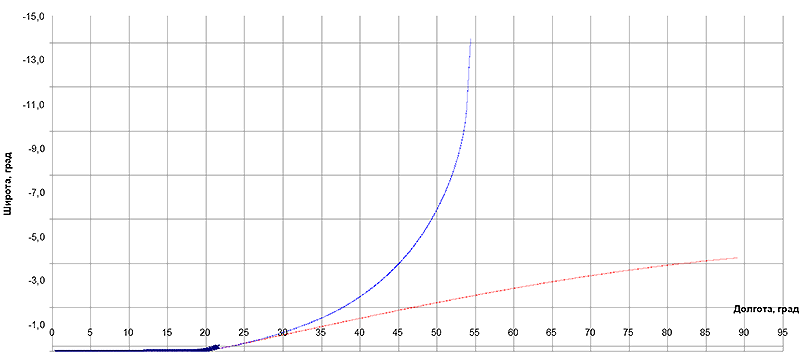
- - Apollo; - "" , Apollo; - "" , .
4,25 - 472,5 . 9852 . 1050 , 1579 , - 6646 . ( )
- " : ". "" - <100 , 1000 - 1500 . , - "" , .
(~ 1 ) "" . (~ 6000 / ) ( ) (~ 1800 - 2000 ) .
- , ( ).
""

- , - 100 , - 800
(. ) , ( ) "" .
1 - 1,5 , . - , / .

""
.
"" .

"" .
, ""
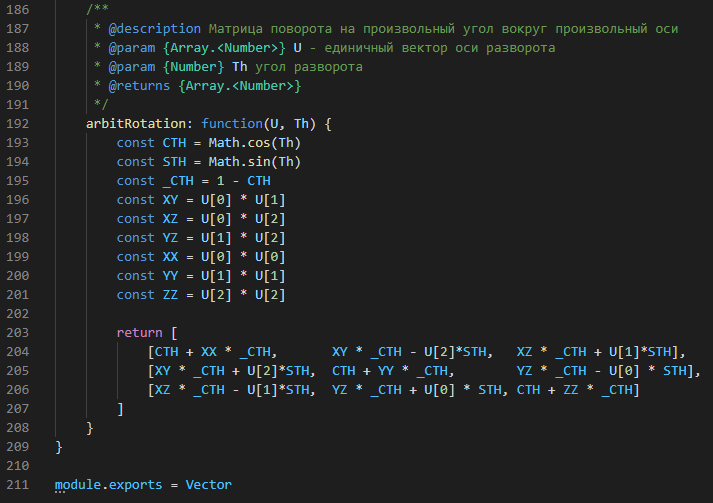
( , )

The repo with the model program and initial data lives on my github . You can poke with a stick, you can fork - suddenly someone else wants to play